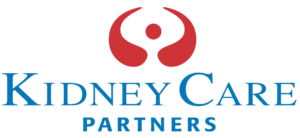Nation’s Kidney Community Reacts to CMS Proposed Rules on Prospective Payment System and ESRD Quality Incentive Program
June 22, 2022
WASHINGTON – Kidney Care Partners (KCP) – the nation’s largest non-profit, non-partisan kidney care coalition comprised of more than 30 organizations dedicated to protecting patients and ensuring equitable access to quality care – today issued the following statement in response to the Centers for Medicare & Medicaid Services (CMS) proposed rule on End-Stage Renal Disease (ESRD) Prospective Payment System (PPS), Payment for Renal Dialysis Services Furnished to Individuals with Acute Kidney Injury, End-Stage Renal Disease Quality Incentive Program (QIP), and End-Stage Renal Disease Treatment Choices Model (ETC):
While our members continue to review the proposed rule, KCP applauds CMS for acknowledging KCP’s concerns and recommendations to promote innovation, meaningful quality metrics, and payment system reforms to support those individuals who require thrice-weekly dialysis, whether in their home or at a dialysis facility.
Payment Provisions
KCP is particularly pleased that CMS has recognized that current policy does not adequately support the adoption of innovative products deemed to be within categories of drugs already included in the ESRD bundle. By requesting comments on options to ensure that the ESRD payment system protects access to innovative drugs and biologicals, CMS has taken an important step forward in ensuring the payment system does not create barriers to patient access. There have been few innovative treatments for kidney failure, especially when compared to the innovation developed to treat cancer, heart disease, and other chronic diseases. Incentivizing and protecting access to innovation is critical to addressing the existing health inequities that the vast majority of individuals who require dialysis experience even prior to their kidneys failing.
KCP is also pleased that CMS has proposed an increase to the ESRD PPS base rate that would result in an overall increase of 3.1 percent for calendar year 2023. We appreciate CMS reviewing the payment system in an effort to align it more closely with the costs providers incur. However, we are concerned that the revisions do not address the current labor crisis that has exponentially increased the cost of labor above the projected labor costs for the ESRD PPS. Facilities are already having to suspend certain times for dialysis because of a lack of staff. Without adequate resources, the problem will only get worse and could result in some facilities not being able to accept new patients – for either home or in-center dialysis – or in having to close their doors. Providing dialysis requires a professional and highly skilled workforce for which Medicare rates need to account, especially given that the vast majority of patients receive coverage through the Medicare program.
KCP also appreciates the clarification in the preamble to the proposed rule that indicates CMS will apply the Transitional Drug Add-on Payment Adjustment (TDAPA) to oral-only drugs, especially phosphate binders. Furthermore, adjusting the base rate to account for the cost of them coming into the bundle in 2025 post-TDAPA is also welcome news for providers and patients. Our members continue to remain concerned, however, that bundling these drugs, which are taken primarily in the home, may not be the best policy for patients. KCP welcomes the opportunity to work with CMS further on this issue.
Quality Provisions
KCP is pleased that CMS has recognized the ongoing negative impact and confounding nature of the COVID-19 pandemic on the ESRD Quality Incentive Program (QIP). KCP has served as the leader in accountable care policy for the kidney care community through its support of the QIP as the first value-based purchasing program in Medicare, as well as through the ongoing support of the Kidney Care Quality Alliance (KCQA) measure development entity that relies on input from individuals living with kidney disease, their family members, health care professionals, and measure development experts. We support pausing the use of the following measures for scoring and penalizing facilities: the Standardized Hospitalization Ratio (SHR) clinical measure, the Standardized Readmission Ratio (SRR) clinical measure, the In-Center Hemodialysis Consumer Assessment of Healthcare Providers and Systems (ICH CAHPS) clinical measure, the Long-Term Catheter Rate clinical measure, the Percentage of Prevalent Patients Waitlisted (PPPW) clinical measure, and the Kt/V Dialysis Adequacy Comprehensive clinical measure.
We look forward to examining more closely the decision to shift the SHR and SRR measures to rates, which appears consistent with the recommendations KCP has made to use rates rather than ratios so that patients and their care partners are empowered to assess facility quality performance with greater transparency. KCP will be closely reviewing the other technical proposals to the current QIP measure set.
KCP is most excited by the request for information about quality metrics for home dialysis patients. The KCQA has already created and tested a home dialysis measure set: the Home Dialysis Rate Measure, which provides the percent of all dialysis patient-months in the measurement year in which the patient was dialyzing via a home dialysis modality, and the Home Dialysis Retention Measure, which providers the percent of all new home dialysis patients in the measurement year for whom less than three consecutive months of home dialysis was achieved. We strongly encourage CMS to adopt these two important measures to promote home dialysis and to ensure that patients who receive home dialysis initially are empowered to continue receiving it beyond the initial period.
Finally, KCP looks forward to working with CMS on the proposals to improve the scoring methodology for the ESRD Treatment Choices (ETC) Model and adding flexibilities regarding kidney disease patient education services in this model as well.
###
